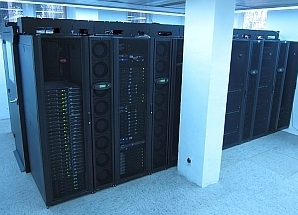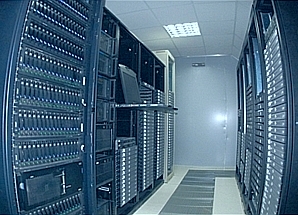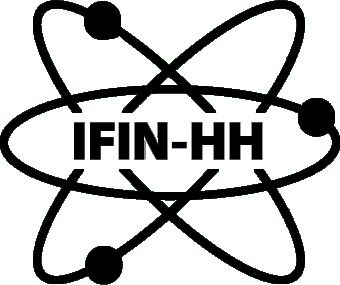1. GRID COMPUTING
DFCTI develops and manages two grid sites, RO-07-NIPNE and GRIDIFIN.
RO-07-NIPNE is dedicated to the computational support of the ALICE, ATLAS and LHCb experiments, within the WLCG collaboration.
For this purpose, in 2018 RO-07-NIPNE offered to WLCG more than 4,400 CPU cores and 2,300 TB storage space, ranking first at national level regarding the resource capacity.
GRIDIFIN supports the ELI-NP project (to which it provided 546,000 CPU hours in 2018) and also serves other research communities in physics and related areas.
2. HIGH-PERFORMANCE COMPUTING
Since 2006, DFCTI's staff has developed the high-performance computing (HPC) infrastructure of IFIN-HH, consisting of parallel clusters in Gigabit Ethernet, Myrinet and Infiniband communication technologies. Today, heavier MPI computations are performed on the IBM_BC cluster (IBM/Lenovo BladeCenter), on more than 1,350 CPU cores and 40,000 GPU cores.
3. CLOUD COMPUTING
Starting in 2014, DFCTI developed a cloud copmuting cluster, CLOUDIFIN, which is registered in the EGI infrastructure.
 |  |
| Northern view of the RO-07-NIPNE cluster | The data center that hosts the grid storage |
Network Infrastructure
DFCTI hosts the point of presence (PoP) through which the Magurele Platform of Physics is connected to the Romanian NREN, RoEduNet, at 30 Gigabits/sec. Due to the increasing grid traffic, DFCTI is currently implementing a plan to gradually increase the bandwidth of IFIN-HH's connection up to 100 Gigabits/sec.




